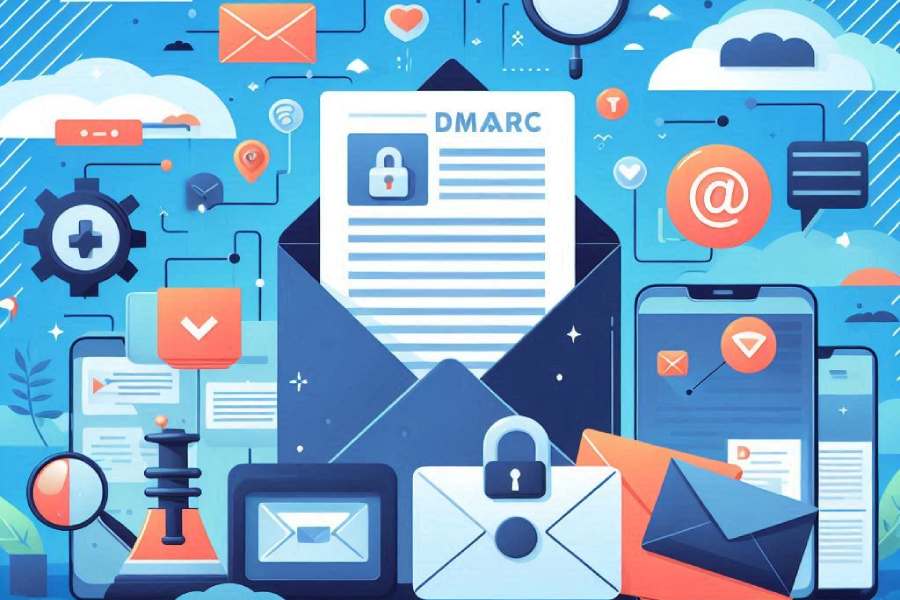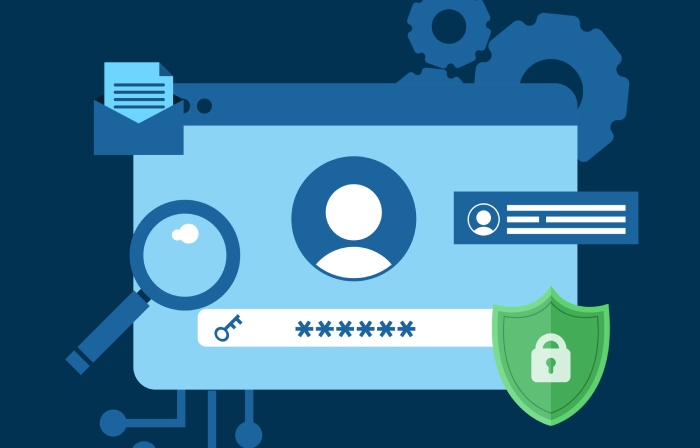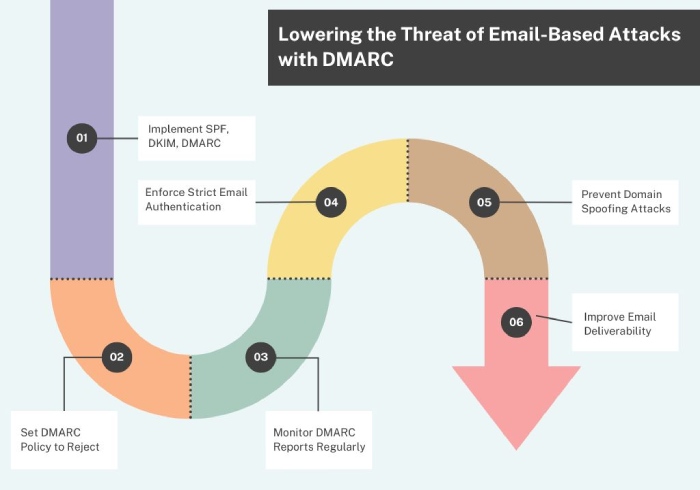What is DMARC compliance, and what are its main requirements in 2025?
If your organization sends out bulk emails, you absolutely cannot overlook its security aspect.
Let’s say you send 5000 emails per day, and even if one of them is intercepted by an attacker, it may have some serious implications. It may open the gates for phishing attacks, domain spoofing, or even mass fraud. In that case, you’re not just risking your brand’s reputation and integrity but also the trust of your customers, partners, and stakeholders.
To prevent falling into this trap and making sure that your emails actually land where they should— the recipients’ inboxes– you require a good game plan. This is where DMARC (Domain-based Message Authentication, Reporting, and Conformance) enters the scene.
DMARC is an email authentication protocol that is meant to block cybercrooks from sending spam emails in your domain’s name. But in order for you to benefit most from it, you don’t merely have to implement it; you must enforce it well. Setting up DMARC won’t help you much if you don’t ensure DMARC compliance.
But what is DMARC compliance, why should you care, and what do you need to do to be DMARC compliant in 2025? We’re going to cover it all in this article.
What is DMARC compliance?
DMARC compliance simply means that your outgoing emails are adhering to the standards set by the Domain-based Message Authentication, Reporting, and Conformance (DMARC) protocol.
This is the technical definition of DMARC compliance, but what it really means is that your emails are properly authenticated with SPF (which verifies whether the email is coming from an authorized source) and DKIM (which ensures that the email has not been tampered with during transit). If your emails meet these requirements for mail receiving servers, it is a big green flag, and as a result, they mark your emails as valid and lower the chances of them being rejected or marked as spam.
But more importantly, DMARC compliance helps keep your domain safe from cybercriminals who may attempt to send scam emails impersonating you. If it’s not enabled, hackers can quickly spoof your domain and trick recipients into opening spam messages.
With your emails being DMARC compliant, you can rest assured that:
- Your emails are protected against email-based attacks
- You get enhanced visibility through reports
- Your spam complaints have significantly gone down
Why should you care about DMARC compliance?
Email fraud is getting worse every year. Over the past decade, the problem has only escalated, so much so that the FBI has warned businesses about Business Email Compromise (BEC) scams, which have caused nearly $55.5 billion in losses. It’s not just about BEC; there are other grave cyberattacks out there that can jeopardize everything that your company values— its reputation, customer trust, and financial security.
With the stakes so high, you simply cannot be negligent with email security. You must keep your emails and business safe. This is where DMARC compliance comes in. By implementing DMARC correctly, you’re not just securing your emails—you’re safeguarding your entire business from potential financial and reputational damage.
Let us take a look at how:
Protecting your domain from phishing and spoofing
DMARC compliance prevents spammers from using your domain to send spam emails. That translates into fewer phishing attempts and much less chance of someone pretending to be your company’s representative. However, if your domain is not compliant, it might be exploited by attackers to send malicious emails, fooling recipients into divulging confidential information or conducting unauthorized transactions.
Ensuring that your emails reach the inbox
No one wants their crucial emails to hit the spam folder, and we’re sure you don’t, too.
Today, more and more email providers are starting to mandate DMARC compliance, so if your emails are compliant, then they’re likely to reach your intended recipient’s inbox rather than being blocked or flagged as spam. This translates into improved email deliverability and uninterrupted communication with your users.
When do you need to be DMARC compliant?
Although the answer to this is fairly straightforward– if your organization sends emails, you need to be DMARC compliant- here, we will take a more nuanced approach.
There are a few cases wherein you cannot overlook DMARC compliance. Let us take a look at them:
PCI-DSS compliance
If your business involves online payments and transactions, DMARC compliance is a must! What this means is that with PCI-DSS 4.0 standards in place, if you’re taking payments, you need to have DMARC set up to meet security standards. The PCI Security Standards Council has given organizations March 2025 as the deadline to be in compliance.
Google & Yahoo’s new email-sending policies
If you’re sending bulk emails (and most businesses do), DMARC compliance is a non-negotiable. Since February 2024, Google and Yahoo have required bulk email senders to be DMARC-compliant. This is how they block spam and make inboxes safer. If you don’t comply, your emails might not reach your recipients.
Blue verified checkmark by Gmail
If you want to add even more credibility to your emails, you must be DMARC compliant. If your domain is DMARC compliant and BIMI (Brand Indicators for Message Identification) enabled, Gmail will show a verification tick next to your emails. Not only does this win the trust of your recipients, but it also makes your emails stand out.
What does it take to be DMARC compliant?
To be DMARC compliant, your emails need to pass certain authentication checks. This means your email must align with either SPF (Sender Policy Framework) or DKIM (DomainKeys Identified Mail), or both.
- SPF helps verify that your emails are sent from authorized servers. You’ll need to create an SPF record listing the servers allowed to send emails on your behalf.
- DKIM adds a digital signature to your messages to ensure they haven’t been altered. You must set up DKIM correctly so that your messages are in accordance with your domain’s authentication practices.
You can establish these manually within your DNS records or employ a tool that does this automatically for you.
How can you achieve DMARC compliance in 2025?
Email security is no longer a choice—it’s a requirement. If your emails are not DMARC compliant, they can be blocked or land in spam folders.
As major email service providers like Google and Yahoo are already requiring bulk senders to be DMARC-compliant, and PCI-DSS 4.0 is making it a priority for companies that process online transactions, how do you make your emails DMARC-compliant in 2025?
Here’s what you have to do:
Create your DMARC DNS record
After you’ve implemented SPF or DKIM, the next thing to do is to create your DMARC record. This is an easy step where you input your domain information, create the record, and publish it in your DNS configuration.
Set a DMARC policy
When creating your DMARC record, you must choose a policy mode to determine how to handle unauthorized emails.
Here’s how the three DMARC policies work:
- None: Simply monitors emails without blocking anything.
- Quarantine: Puts unauthorized emails into the spam/junk folder.
- Reject: Blocks unauthenticated emails from entering inboxes altogether.
Also, if you have subdomains that you use to send out emails, you can implement a separate policy for them, too.
Publish the DMARC record
Once you’ve configured the policy, you need to publish the DMARC record in your DNS. This enables the protocol, but remember that DNS updates may take a while to propagate.
After these steps are done, your domain will be DMARC compliant, substantially lowering the threat of email-based attacks and enhancing email deliverability.
How do you stay DMARC compliant?
Cybercriminals and their ways are evolving by the day, which means you should also put efforts into staying ahead of them and staying in compliance.
Let’s see how you can do it:
Use a strong DMARC policy
The best way to prevent attackers from spoofing your emails is to have your DMARC policy as p=reject. This ensures that any unauthorized emails that claim to be from your domain are blocked. But while you’re at it, make sure that you aren’t jumping straight away to ‘p=reject.’ You should gradually move from ‘none’ to ‘quarantine’ and finally to ‘reject’ to avoid deliverability issues.
Secure your subdomains
Even if you don’t use your subdomains to send emails, hackers can try to abuse them. So, implement DMARC policies on all your subdomains to protect them.
Verify third-party senders
If you are using services such as email marketing platforms or CRMs to send out emails, ensure that they are all SPF, DKIM, and DMARC compliant. If not, your emails may be marked as suspicious.
Check your DMARC reports
Keep track of who is sending emails using your domain. Regularly checking your DMARC reports ensures you can spot any illegitimate senders and correct any email delivery issues before they turn into a bigger problem.
While achieving DMARC compliance isn’t as complex as it seems, it is best to have an expert do it for you! If you’re looking for someone to help you become DMARC compliant, we’d love to help! Contact us today to learn more.


